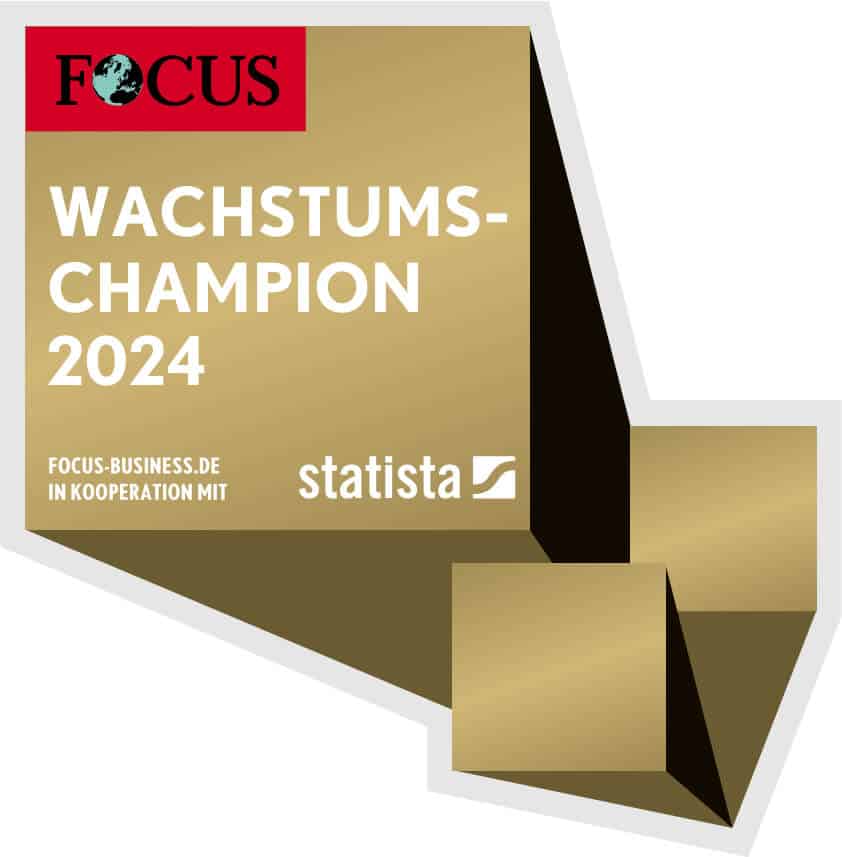The topic of artificial intelligence is becoming increasingly important in this era of digitalization. It is often already being used in people's everyday lives without them being aware of it. Many large companies have also already Areas of application for artificial intelligence in their companies created. Artificial intelligence gives companies the opportunity to optimize their production and reduce failure rates. The following article shows how artificial intelligence can be integrated into a company's production process.
The benefits of artificial intelligence are everywhere
Stephen Hawking sees Great potential in artificial intelligenceIt is unclear exactly what changes will occur with the help of AI. However, this "new technological revolution" may open up opportunities to combat the damage caused to nature and poverty. Ultimately, it will probably find its way into every single area of life.
The decisive advantage of artificial intelligence is probably its ability to process and analyze more information than is even possible for humans.
Also in medicine, in production, product development or in the administration this aspect of digitalization has already arrived. Medicine in particular is already so far advanced when it comes to artificial intelligence that it is almost impossible to do without artificial intelligence methods. They provide support during operations or even carry them out independently or are used to precisely analyze and evaluate medical images.
In order for artificial intelligence to make the most accurate predictions possible, a large amount of data is required. Big Data has a major influence on the accuracy of the results of artificial intelligence: the machines' ability to learn makes every analysis and evaluation of the data more precise.
Artificial intelligence can therefore also represent a great opportunity for companies, as it can be used effectively to optimize business processes. One example of this is the optimization of production with the help of artificial intelligence, such as on the assembly line. If artificial intelligence is integrated into the production process, this can be a precise way of preventing machine failures based on large amounts of data.
Artificial intelligence models for predictive maintenance
The relevant models that play a major role in this context are predictive maintenance, condition monitoring and fuzzy logic.
Predictive maintenance
Predictive maintenance is one of the main components of Industry 4.0. Translated, the concept means something like 'predictive maintenance': Predictive maintenance is intended to avoid unnecessary downtime and the associated production losses.
The process is designed to detect and report potential problems that may soon occur in good time, before the device or machine actually has a defect. This prevents disruptions and delays in production. This has the additional advantage of saving costs, as these are usually significantly higher for a 'proper repair' than for maintenance work.
Predictive maintenance takes place in three steps:
- The collection of data
- Analyzing and evaluating the data
- Calculations of the probability of occurrence of possible problems.
The artificial intelligence can then use this information to make a recommendation for action. One notable example of possible predictive maintenance software is 5 Analytics: The start-up focuses on the integration of artificial intelligence into company processes. It has already won several awards as "Technology Start-up of the Year".
Condition monitoring
Condition monitoring is a special form of predictive maintenance. It describes the continuous monitoring of the condition of machines.
This monitoring is carried out by measuring, analyzing and evaluating noise, temperature, vibrations and similar data. The sensor data of the machines is constantly checked, which ensures that the machine is in good condition. If there are deviations in these data series, this can be the first sign of potential problems.
This method allows companies to optimize the maintenance of machines and assembly lines in many ways. On the one hand, they save money if intact parts are not replaced regularly after a certain period of time, but only when they actually show problems and defects. Secondly, production downtimes and the associated costs are reduced.
Fuzzy logic
Fuzzy logic can be integrated into condition monitoring in order to make even more accurate predictions. Fuzzy logic involves the machine filtering out incomplete, incorrect or contradictory information in a similar way to humans.
To the same extent that the complexity of a system increases, the ability of humans to make precise and at the same time significant statements about the behavior of the system deteriorates. This is where artificial intelligence has the advantage over humans: The more data is available, the more accurate the statements become. However, the machine has so far lacked the competence to detect and exclude incorrect data. Fuzzy logic was developed to solve this problem.
Fuzzy logic is a concept of "logic for fuzzy sets". Without this, even machines only have limited possibilities for their analyses. Ultimately, there are only:
- "Yes" / "No"
- "Correct" / "Incorrect"
- "Defective" / "Intact".
With the help of fuzzy logic, it should now be possible to make, analyze and classify additional, ambiguous statements. This includes terms of the fuzzy set, such as "a little", "a lot", "a little", "often", "rarely" et cetera. It is therefore a matter of taking fuzzy and imprecise statements into account when interpreting a situation.
The combination of condition monitoring and fuzzy logic thus represents an efficient method for companies to optimize production on the assembly line, for example.
Artificial intelligence has a far-reaching impact on downtime rates
For the calculation of the probability of failure in mechanical engineering, there is a Overview of factorsall of which influence the downtime rate. A distinction is made between internal and external company data. In the case of internal data, dynamic factors such as the temperature or vibrations of the machine play an important role. In addition, static data such as age or material influence the probability of failure.
External factors must also be taken into account, even if the company has no influence on them. This includes information on the groundwater level, weather conditions or the machine's installation environment in general. This data can then be used to analyze the current condition of the machine.
This overview clearly shows that an enormous amount of data is required in order to be able to make precise statements about the probability of failure. The probability of failure due to internal factors is minimized with the help of artificial intelligence: The corresponding software analyzes large amounts of data from the machine. If irregularities occur in this data, the software recognizes this immediately. Based on this analysis, the machine can not only issue a warning, but also a complete recommendation for action. This means that all factors over which the company itself has influence can ultimately be optimized using artificial intelligence.
Artificial intelligence in production in the automotive industry
If this is applied to a company in the automotive industry, a number of opportunities become apparent. For example, high downtime rates on the assembly line are prevented by the machines reducing failure rates and optimizing production.
The problem of excessive failure rates can be solved with the help of predictive maintenance, for example. The technology is integrated in such a way that the data and information is constantly analyzed during production, for example by sensors. If there is a deviation in the regularity of the data, which could indicate that a repair will soon be required, a warning is shown on the display. However, the system not only provides information that a repair will be due in the foreseeable future: It also creates a precise analysis of the problem and derives a recommendation for action.
Fuzzy logic is already being used by many automotive companies. However, it is still common practice to use random samples for quality control, which are manually checked by employees for compliance with certain characteristics. With the help of fuzzy logic, this process can be automated using an image analysis system. This analysis system is then fed the required characteristics and properties, such as surface quality. These ideal dimensions are saved as an "OK" template. Dimensions that are no longer within the acceptable range are stored as an "unsatisfactory" template, for example. Another option is to create a template with dimensions that are just within the acceptable range but should also be checked by an employee and saved as "to be checked". This automation can therefore also reduce the error rate.
Conclusion: Artificial intelligence has enormous potential, and not just in terms of production and downtime rates

This brief insight into the possibilities of digitalization alone illustrates the enormous potential that artificial intelligence brings to the production area of companies. It is therefore safe to conclude that the technologies for this will continue to develop over the coming years.
This article was written by Professor Dr. Peter Steinhoff in collaboration with Lisa-Maria Rohrmüller. Ms. Rohrmüller works as a marketing manager in the business-to-business sector and is studying for a Master's degree in Business Administration at the University of Applied Management in Ismaning near Munich.
(Cover image: © wladimir1804 | AdobeStock)


